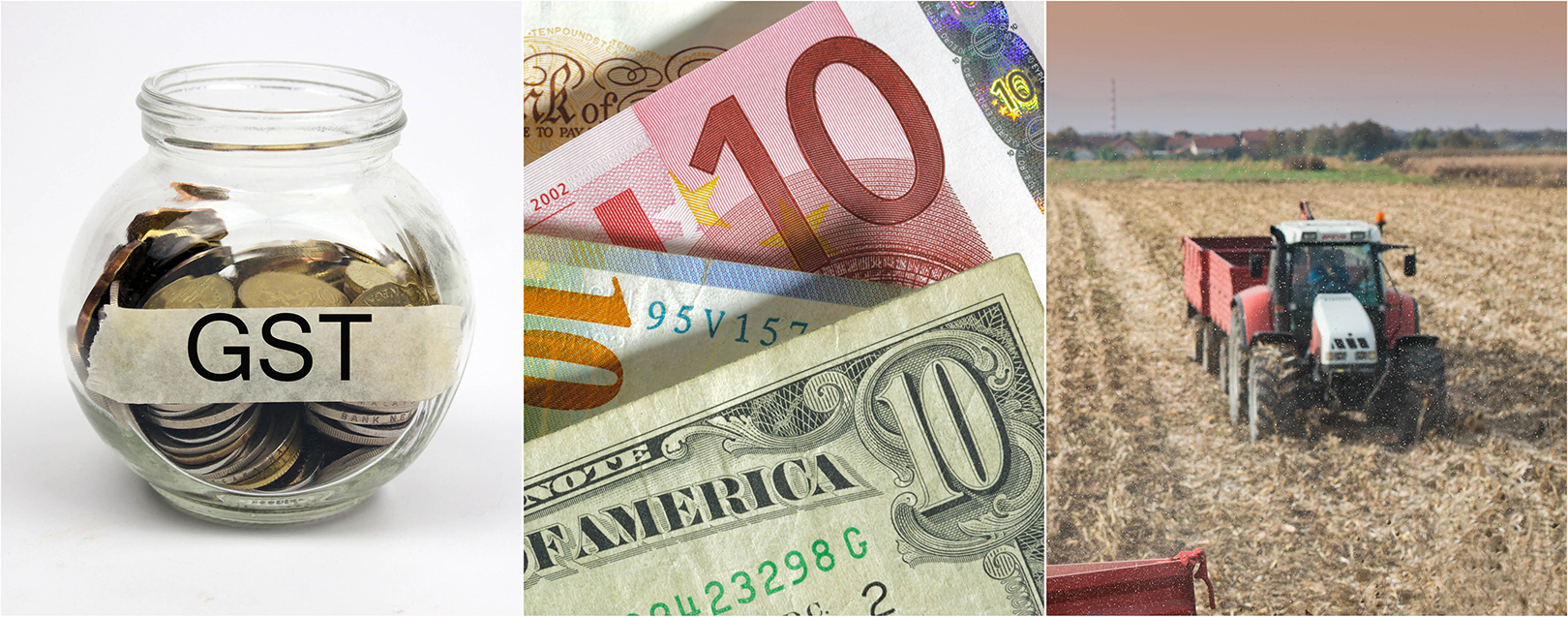
8th successive month of growth in exports, trade deficit widens
By Abin Daya
The highlight of the week was the finalisation of GST rates for goods and services. This has brought some much needed clarity and has laid the ground further for the July 01 rollout of a unified domestic market. We will try and do a detailed commentary on this in the coming weeks.
Equally important were the foreign trade numbers released this week, which showed positive growth in exports for the 8th successive month. The numbers also included the service export numbers for Mar 2017, thus helping compile overall trade numbers for FY17. Suffice to say that while merchandise exports are growing, deficit numbers also seem to be picking up. In fact, trade deficit for Apr 2017 is almost 13% of the deficit numbers for entire FY17. We might see a hike in merchandise trade deficit, and thereby, overall deficit during the current FY.
While it forms a very small part of overall exports, oilmeal exports are significant as it forms a part of the agri exports business. While exports have recovered after two years of decline, import of vegetable oils seems to be on a decline. We will have more on this in the coming weeks too.
Continuing on the thread of the agriculture sector, a bumper harvest has improved the supply situation of many of the commodities, and has helped bring down inflation, both wholesale and retail. At the same time, it has also affected the producers, with many of them unable to get even the Minimum Support Prices for their products. Added to this, grain importers are also facing a tough time due to the crash in prices.
Prices of India’s crude basket have gone up above $50 levels again this week. OPEC countries and Russia are meeting again on May 25 to decide on whether to extend the supply cuts which are scheduled to end by May. However, as US drillers move in to fill the space vacated by OPEC, there doesn’t seem to be much room for oil prices to rise significantly. As I have said before, break-even for US rigs have fallen to $30 levels, and at current prices, there seems to be more and more number of rigs being added every week.
While LIBOR has fallen (both 6 month and 12 month that we are tracking), overnight MIBOR seems to have moved up by about 5bps. 1 month and 3 month MIBORs are at the same level as they were last week.
Exports maintain double digit growth; trade deficit widens
- Merchandise exports continued to grow in double digits in Apr 2017 at 19.8%; this is the 8th consecutive month of positive growth for exports
- India exported $24.64Bn worth of goods in April as against $20.57Bn during the same month last year
- This is the third straight month of double digit growth, though the rate of growth has fallen from a high of 27.6% in Mar 2017
- Imports, however, maintained the increasing pace of growth and grew at 49.1% during Apr 2017

- If we look at the historical numbers over the past 18 months, it will become very clear that the moderation in trade deficit during the latter part of FY16 was not due to strong exports, but only due to weakening imports
- In fact, the lowest level of trade deficit of $1.9Bn during March 2016 saw import growth slowing down to -21.6%, while export growth was at -5.5%
- The lowest point over the past 18 months, in Nov 2015, saw imports slowing down to -30.3%, which was the same time export growth also slowed to -24.4%
- Deficit during Nov 2015 was $6.21Bn, which was still lesser than the average monthly trade deficit of $9.84Bn of FY16
- Consequently, now that imports are on a significantly high growth path, the deficit seems to be widening at a blistering pace
- While low levels of deficit during the early part of the Financial Year had helped us achieve a 10% reduction in trade deficit during FY17 as against FY16, the advantage seems to be slipping
- Trade deficit has widened to $13.2Bn in April, 173% growth over deficit of $4.8Bn during same month last year
- It would be interesting to also see if this increase in import growth is entirely due to the recovery in crude prices

- For the greater part of the past 18 months, the graph of import performance for non-oil imports has remained above that of oil imports
- From Dec 2016, growth of oil imports have widely outperformed that of non-oil imports, peaking at 101.4% growth in March 2017
- This corresponds to the recovery in crude prices subsequent to the OPEC supply cuts, put in place from the first week of Dec 2016
- However, moderating oil prices have pulled down the growth in oil imports to 30% in April, from the previous month’s levels
- Non-oil imports have, at the same time, continue to increase their pace of growth which has hit a high of 54.5% in April, supported by a three-fold rise in gold imports
- If we exclude gold imports, other merchandise imports have still grown at about 44% y-o-y, still higher than the growth in oil imports

- Most of the discussion on India’s foreign trade happens around that of merchandise trade, while service trade is often relegated to the background
- Service exports accounted for $160Bn worth of inflows in FY17, almost 60% of foreign currency earned by merchandise trade
- But more importantly, service trade is also important due to the fact that it generates a surplus

- Service trade generated a surplus of $65 billion in FY17, which helped partly address the $105 bn deficit created by merchandise trade
- However, the surplus in the last FY was 6.1% lower than what was generated in the previous year, owing to a faster growth in service imports
- Imports grew at 11.4% over previous year, as against exports, which grew at a more sedate 3.6%
- Part of the growth in imports was due to a 46.4% increase in service imports during the month of Nov 2016
- Looking at this a little more closely, outward remittances during Nov 2016 was at $8.3Bn, just about 5% above the monthly average outward remittances of $7.9Bn in FY17
- What has moved the needle is a significantly steep drop in outward remittances during Nov 2015, which at $5.6Bn was 20% lesser than the monthly average remittances of $7.1Bn
- If we take out this outlier, the growth in outward remittances moderates to 8.9%, which is still significantly high compared to growth in inward remittances
- Combine this with the fact that the major contributor of service exports is the IT/ITES segment, which is going through troubled times at the moment, it does not bode well for the surplus figures for FY18
- Overall deficit (services + merchandise trade) which had declined from $48.63Bn in FY16 to $40.51Bn in FY17 might move significantly up in FY18
Oilmeal exports increase, while vegetable oil imports decline
- Oilmeal exports for Apr 2017 increased by 19% y-o-y to 135,474 tonnes, as against 113,978 tonnes during same month last year
- Almost 92% of these volumes were contributed by export of Soyameal, which had a much lower share of 10% during the same month of previous year
- Ricebran extract, which had a 44% share of volumes during Apr 2016, had negligible volumes in Apr 2017

- Indian exports of Oilmeal rose in FY17, reversing two continuous years of declining trend, aided by continued strong demand from countries such as Bangladesh and France
- It is expected that the total soyameal shipments will exceed 2 million tonnes in the current oil year ending Sep, which would help drive a recovery in overall exports
- At the same time, vegetable oil imports fell 6% in the first half of the current oil year, to 7.13 million tonnes
- A 7% increase in monthly imports during Apr 2017 has helped reduce the decline from the 9% where it was during March 2017
- Vegetable oil imports were the highest at 1.34Mn tonnes during the month of April 2017, consisting mainly of edible oil imports at 1.32Mn tonnes
- Import of non-edible oils during the current oil year (Nov to Apr) is reported at 139,876 tonnes, as against 62,480 tonnes during same period last year, a growth of 124%
Challenging times for grain importers
- A record harvest of grains has slowed import of grains and has dented the profits of a number of traders

- As good quality domestic stocks hit the market, wheat importers are trying to manage unsold inventories being stockpiled at ports and at warehouses
- A global supply glut has also crashed the prices of grains across the world, and the government had recently imposed a 10% import duty on wheat to support prices to farmers
- However, even without the import duty, the demand for imported stock has come down, and inventories at ports have climbed to a record high of 1.8Mn tonnes
- It is expected that imported wheat may find buyers during the latter part of the year, as domestic supplies dwindle
- A similar situation is unfolding in pulses, where a 35% increase in production has led to a record harvest of 22.14Mn tonnes in the current crop year
- The government has built up a buffer stock of around 20Mn tonnes from imports and domestic sourcing, and is currently looking for ways to distribute it
- At the same time, farmers are battling low prices as supplies drive down recoveries in wholesale markets

Abin Daya the author of 'Basics of Trade: An India Perspective' is a FEMA expert, a career transaction banker, with close to 15 years of experience in corporate and transaction banking, in India.
.jpg)






 to success.
to success.